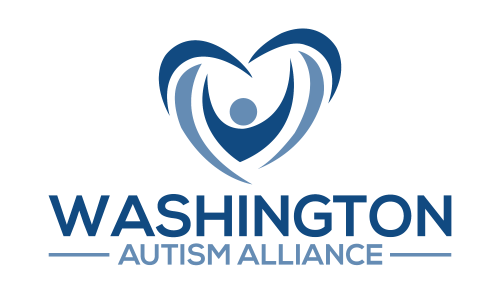Shout out to WAAA in this column by Kate Riley in today’s Seattle Times.
Originally published Saturday, July 13, 2013 at 4:11 PM
Childrens hospital bus ads expose a dialogue about autism
Columnist Kate Riley writes that the recent dust-up over bus ads that mentioned autism provides an opportunity to talk about how society responds to people on the autism spectrum.
By Kate Riley Times editorial page editor
Matt Young was trying to make me understand.
“Remember that picture of the hearing on abortion and all the people on the panel were men?” he asked.
Oh, yeah. Where were the women? I remember thinking when I saw that picture of a U.S. House hearing several weeks ago. It didn’t feel good. But Young’s point wasn’t about abortion, it was about how, too often, people with autism are left out of society’s response to autism spectrum disorder.
Young is the co-leader of the Autistic Self Advocacy Network’s Washington chapter, which raised a ruckus last week over some ads created for Seattle Children’s Research Institute that appeared on some Metro buses. Next to the photo of a child were the words: “Let’s wipe out cancer, diabetes and autism in his lifetime.”
Young, who has autism, viewed the ad as an affront to his identity. ASAN is an organization “run by and for autistic people.” Among its many aims is to engage the community about issues of inclusion and respect for neurodiversity.
Cure someone of cancer or diabetes, and the person remains mostly unchanged, Young said. But wipe out the autism, and the person would be fundamentally different.
That, right there, was an interesting moment for me, the neurotypical mother of a 16-year-old with autism. Honestly, the initial diagnosis brought grief. Autism was my adversary and my son, its victim.
But over time, my view has become more nuanced. I never would choose autism for my son, whose condition severely limits his ability to communicate and, therefore, our ability to know him.
But, here’s the important part: The boy I love would not be that boy without autism. He would be somebody different.
Seattle Children’s responded quickly, taking the ads down and posting a statement on Facebook: “We are sorry for the hurt and anger these ads have caused — that was never (the ads’) intent.”
A very appropriate response by a regional treasure of an institution devoted to children’s health. The incident in no way detracts from the work the hospital and its research institute have done to help children with autism get the care they need. My son has been a patient since he was 10 months old.
But the episode, and my debate with Young, highlights important points — people with autism live throughout our community, and the autism community is not a monolith. Individuals with autism are unique. Some need constant supervision. Some have successful careers.
A famous example is Temple Grandin, whose story was told in the HBO movie of the same name. Her exquisitely unique wiring gave her an amazing empathy for cattle and her designs for humane livestock farms and slaughterhouses were considered revolutionary.
People can have autism and, yes, even rock it. Remember James Durban, the American Idol Season 10 finalist? On the spectrum.
My son has his own gifts, like inspiring friendships even though he is a limited conversationalist. Seven neighbors he befriended over his interest in their lawn mowers posed with the machines for a Christmas book we made. A classmate in his mainstream choir class, where I can picture my son listening to the music with his whole body, wrote a note: “You are so genuine and free in everything you do. You are the example of how to live life.”
I disagree with some of Young’s opinions about the importance of research into the causes of autism — I think it is vitally important — and about the work of Autism Speaks, which is the largest organization devoted to autism treatment, research and advocacy.
Thanks in part to Autism Speaks’ advocacy, 33 states now require state-regulated insurance companies to cover autism treatment. Oregon could be the 34th if the governor signs the bill on his desk. Washington lawmakers have not had the will, so the Washington Alliance for Autism and Advocacy is leading the charge in the courts, securing four settlements to provide coverage. Three other lawsuits are heading to the state Supreme Court.
But here’s where I do agree with Young. Society must embrace people like him, my son and others across the autism spectrum.
The U.S. Centers for Disease Control and Prevention estimates that one in 88 people are on the autism spectrum. People with autism are all around us. Let’s accept their differences.
And, whenever possible, let’s listen.
Kate Riley’s column appears regularly on editorial pages of The Times. Her email address iskriley@seattletimes.com On Twitter @k8riley
http://seattletimes.com/html/opinion/2021383673_katerileycolumn14xml.html

